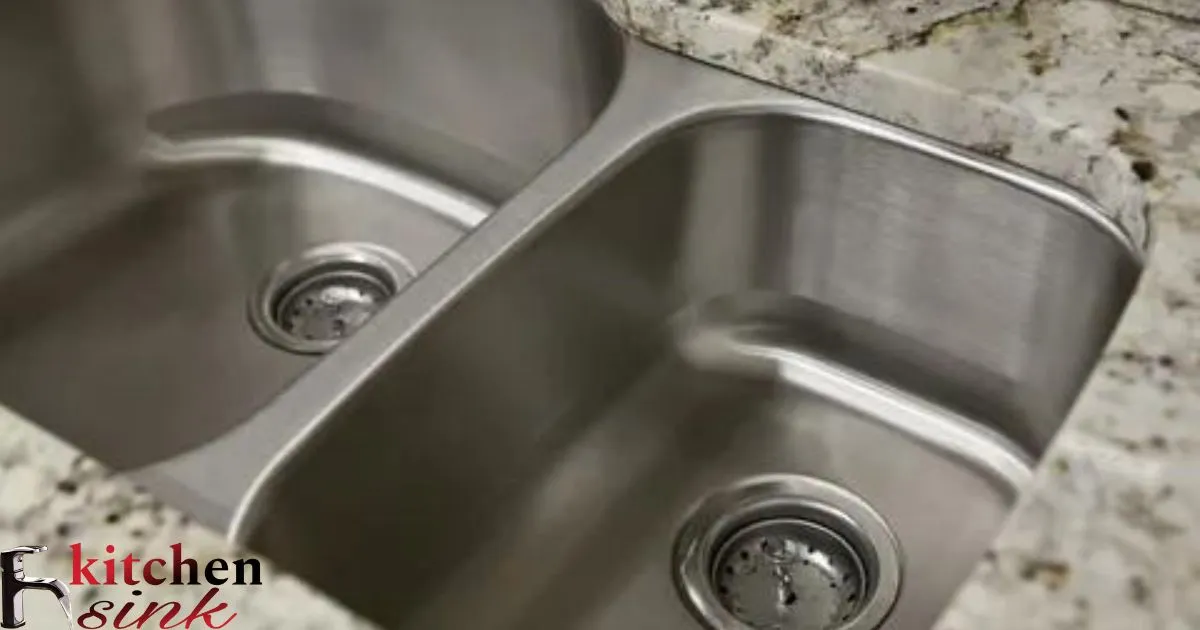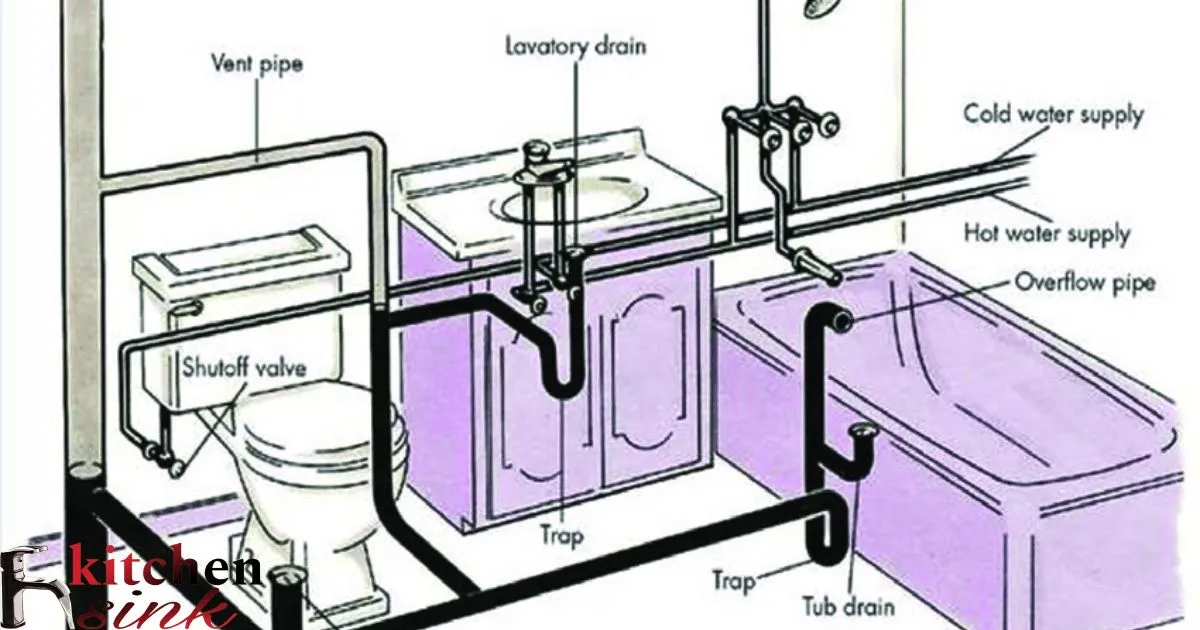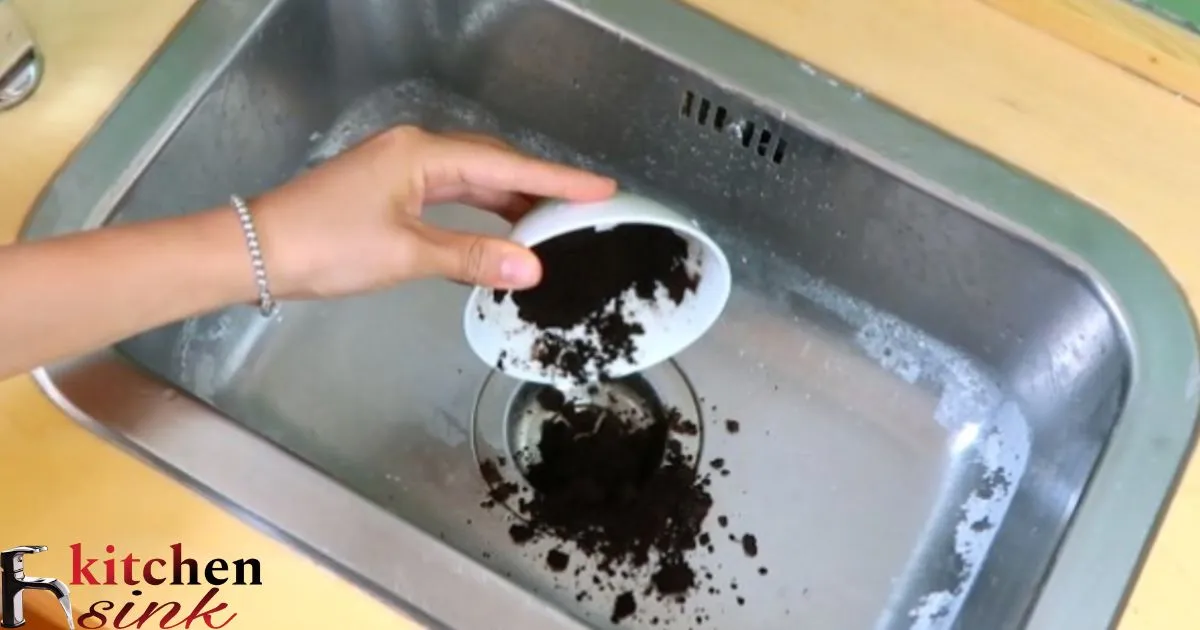Kitchen sink drains refer to the pipes and fittings installed under a kitchen sink to carry water and waste away. The size of kitchen sink drains can vary depending on factors like the number of basins and capacity of the sink. Most standard kitchen sink drains have a 1.5 inch diameter pipe size.
Are All Kitchen Sink Drains The Same Size? This is a common question for homeowners planning kitchen renovations or installing new sinks. While 1.5 inches is the most common, drain sizes can range from 1.25 inches to 3 inches depending on the specific sink and plumbing setup. Understanding drain sizing helps ensure proper fit and drainage.
The size of a kitchen sink drain pipe is an important consideration when installing a new sink or planning kitchen plumbing work. Though 1.5 inches is a typical standard diameter, not all drains are the same. The number of sink basins, expected water flow, and existing pipe infrastructure should be evaluated to determine the appropriate drain size and prevent future drainage issues. Proper measurement and planning are key.
Kitchen Sink Drains The Same Size
Most kitchen sinks use a standard 3.5-inch drain outlet size. This allows connecting to the standard 1.5-inch kitchen drain pipes and fittings underneath the sink. However, some larger, deeper sinks may use a 4-inch drain outlet. When replacing or installing a new kitchen sink drain, it’s important to check that the drain assembly fits the sink drain hole size.
Standard Kitchen Sink Drain Size
The standard kitchen sink drain pipe size is 1.5 inches in diameter. This applies to the threaded tailpiece that connects to the sink drain basket, the PVC pipes and fittings leading to the P-trap, the P-trap components, and the pipe connecting to the main drain line. Using this standard size for all components allows proper drainage flow and compatibility between parts.
Kitchen Sink Drains Connect And Drain
A kitchen sink drain system starts with the sink drain basket assembly that fits into the sink drain hole and uses a lock nut to secure it. Below, Size P Trap For Kitchen Sink a tailpiece with threads on one end screws into the drain basket.
The other end connects via a slip joint to 1.5-inch PVC pipes, fittings, and the P-trap leading to the main drain line. Slip nuts tighten all the connections. Proper slope and no clogs allowed waste water to drain freely through the system.
Different Components Of A Kitchen Sink Drain
| Component | Description |
| Strainer | Sitting inside the sink, it catches large debris while allowing water to pass through small holes |
| Trap | Curved section of pipe that holds water to prevent sewer gases from entering and catch small debris |
| Tailpiece | Straight pipe section connecting trap to main drain line to direct wastewater into plumbing system |
| P-trap | P-shaped pipe section that connects to tailpiece and drainpipe to maintain water seal |
| Drainpipe | 1 1/2 inch pipe carries wastewater from tailpiece to main drain line |
| Reducer | Connects 1 1/2 inch drainpipe to 2 inch main drain line if needed |
The strainer, trap, tailpiece, and P-trap make up the drain assembly under the sink. The drainpipe and optional reducer connect the drain to the main plumbing drainage system. Together, these components work to efficiently carry away wastewater while preventing clogs, leaks, and sewer gas entry.
Size Pvc Pipe Is Used For Kitchen Sink Drains
The standard size PVC pipe used for kitchen sink drains and their components is 1.5 inches in diameter. This sizing applies to the tailpiece, P-trap pipes and fittings, trap arm, and additional extensions connecting to the main drain line. Using all 1.5-inch PVC parts allows proper drainage flow and compatibility.
Bathroom And Bar Sink Drains Have The Same Size
Bathroom and bar sink drains typically do not have the same standard sizes. According to the sources, a standard bathroom sink drain size is often 1 1⁄4 inches, although sizes of 1 1⁄2 inches and 1 5⁄8 inches are also common. In contrast, bar sinks tend to have a drain size of 2 inches.
The reason for this difference is that bar sinks are designed to handle more heavy-duty usage than bathroom sinks, so they require a slightly larger drain opening. However, bar sink drains are still smaller than the standard 3 1⁄2 inch kitchen sink drain because they do not need to accommodate as much drainage capacity as a kitchen sink.
Standard Bathroom Sink Drain Sizes
As stated in the search results, common standard bathroom sink drain sizes include 1 1⁄4 inches, 1 1⁄2 inches, and 1 5⁄8 inches. The 1 1⁄4 inch size is the most prevalent. These drain dimensions refer to the diameter of the drain opening.
Standardization of these sizes allows for easier installation and replacement of bathroom sink drains and compatibility with most bathroom faucets on the market. Bathroom sinks may or may not have an overflow drain in addition to the main drain. If present, it’s important to get a drain with an overflow hole to match the sink.
Size Are Most Bar Sink Drains
The search results indicate that the standard bar sink drain size is 2 inches1. This refers to the diameter of the drain opening or strainer. Bar sink drains are slightly larger than bathroom drains to handle more usage, but smaller than the 3 1⁄2 kitchen sink drain.
According to, bar sink drains connect to either a 1 1⁄4 inch or 1 1⁄2 inch tail pipe below. So the 2 inch opening at top narrows down to a smaller diameter pipe. The standardized sizing makes the installation of drains and strainers easier across different bar sinks.
Bathroom And Bar Sinks Smaller Than Kitchen Sinks
Bathroom and bar sinks have smaller drain sizes than kitchen sinks because they serve less intensive functions, requiring less drainage capacity1. Bathroom sinks are only used intermittently for handwashing and teeth brushing.
Bar sinks see more use but still less than continuous food preparation and dish washing. In contrast, kitchen sinks need to drain large volumes of water from frequent use washing dishes, produce, hands, and more. So kitchen drains are larger at 3 1⁄2 inches to prevent water accumulation. Standardization of drain sizes for each application makes the installation and replacement process easier.
Factors Impact Kitchen Sink Drain Sizing
The size of a kitchen sink’s drain is typically 3.5 inches, but several factors can impact whether a larger drain size is needed. The amount of usage, number of connected fixtures, distance to the main stack, and local plumbing codes can all affect ideal drain sizing.
For example, a kitchen that prepares large volumes of food or has multiple sinks connected to one drain line may require a wider 4-inch drain pipe to handle the increased water flow. Consulting plumbing codes and measuring existing pipes is key to choosing the optimal kitchen sink drain size.
Kitchen Sink Usage Impact Drain Size
The intended use and functionality of a kitchen sink plays a major role in determining appropriate drain size. Sinks used for washing lots of dishes, preparing large meals, or filling stock pots need sufficient drainage capacity. Excessive food waste or grease can also clog smaller drains over time.
High-use kitchens may therefore require a larger 4-inch drain pipe versus the standard 3.5-inch pipe to allow rapid water flow and prevent backups. Considering current and future usage helps size drains properly from the start.
Use A Larger Kitchen Sink Drain Pipe Size
In addition to heavy-use kitchens, situations where multiple fixtures connect to one drain line call for increased capacity. For example, if a kitchen has a prep sink, bar sink and main sink joining the same drain, a wider 4-inch pipe helps handle the combined drainage volume.
Long horizontal drain pipe running over 5 feet or having more than two 90-degree bends can also restrict flow, making a larger drain size prudent. Consulting local plumbing codes is also wise since some specify minimum drain sizes based on factors like fixture units connected.
Issues Can Improper Kitchen Sink Drain Sizing Cause
5 issues that improper kitchen sink drain sizing can cause:
- Slow drainage and clogging – A drain that is too small will not allow water and food particles to flow freely, leading to backups and clogs.
- Leaking connections – If the drain size does not match the tailpiece or trap, leaks can occur at compression fittings.
- Noisy plumbing – Improper sizing leading to clogs and backups can cause gurgling sounds as air and water struggle to pass through.
- Damage over time – Continued use will put strain on incorrectly sized drain components, causing cracks or failures.
- Need for frequent plunging/snaking – Smaller drains require more frequent use of plungers or drain snakes to clear obstructions.
Determine My Kitchen Sink Drain Size
The standard drain size for most kitchen sinks is 1.5 inches in diameter. This larger size compared to bathroom sinks allows for effective drainage even during heavy use. To check your kitchen sink drain size, look under the sink at the tailpiece where the drain connects.
This threaded piece should match the diameter of the drain pipe, usually 1.5 inches. You can use a measuring tape to confirm the size. If your drain pipes connect to a larger 2 inch main drain line, there will be a reducer fitting to go from 1.5 to 2 inches.
Measure My Existing Kitchen Sink Drain
The kitchen sink drain size can be measured under the sink. Look for the tailpiece, which is the threaded piece of pipe sticking out from the sink drain basket. The tailpiece connects to the drain piping with a slip joint, compression fitting, or threads.
Use a measuring tape to measure the outer diameter of the tailpiece in inches. This will give you the size of the drain. Standard kitchen drains are 1 1⁄2 inches. If you measure a different size, make note of it for replacement purposes.
Kitchen Sink Drain Needs Replacing
If your existing kitchen sink drain needs replacing, use a drain with the same 1 1⁄2 inch diameter size. Using the standard size ensures compatibility with drain baskets, P-traps, and piping. Look for a drain kit that includes all the parts needed – basket strainer, gasket, locknut, and tailpiece.
Make sure to get the appropriate finish for the sink material. For ease of installation, a self-rimming drain basket is recommended. Replace old piping with new 1 1⁄2 inch PVC pipes and fittings. If connected to a 2 inch main drain line, use a 1 1⁄2 to 2 inch reducer fitting.
Contact If I’m Unsure Of Kitchen Sink Drain Sizing
If existing drain components make it difficult to measure or determine the kitchen sink drain size, contact a professional plumber5. A plumber can inspect under the sink, identify the drain size based on pipe diameters, and make recommendations if replacement is needed.
For new sink installations, plumbers can also advise on appropriate drain sizing to handle water flow and prevent future clogs. Hardware stores may also have knowledgeable staff to assist with questions regarding kitchen sink drain sizes and specifications.
Precautions Should I Take When Installing Kitchen Sink Drains
When installing kitchen sink drains, it’s important to take safety precautions. First, turn off the water supply to prevent leaks or accidents. Wear protective gloves and eyewear in case tools slip. Clear the area under the sink to allow room to work. Place a bucket underneath to catch any water in the pipes. Inspect the existing plumbing and note any potential issues.
Ensure you have the proper tools for the job. Follow the manufacturer’s instructions carefully when installing the new drain. Work slowly and double check connections. Test for leaks once installation is complete before using the sink. Consider hiring a professional if you are unsure of any part of the process. Taking precautions ensures safety and a smooth installation.
Why Is Proper Alignment Important For Kitchen Sink Drains?
Proper alignment of kitchen sink drains is critical for allowing water to flow freely down the drain. The drain must align perfectly with the sink basin so water flows directly into it. Any misalignment could cause water to pool around the edges of the drain instead of draining properly.
This pooling can lead to leaks, water damage, and rust over time. Additionally, proper alignment allows connections to fittings below the sink to be made easily without unnecessary bends or strains on the pipes.
Ensuring alignments are correct the first time prevents potential leaks from pipes and joints being positioned awkwardly under the sink. Taking measurements and using the manufacturer’s instructions for alignment helps get positioning precise. Proper alignment of kitchen sink drains on install prevents many problems down the road.
Ensure A Watertight Kitchen Sink Drain Seal
A watertight seal is essential between the kitchen sink drain and sink basin to prevent leaks. Using plumber’s putty or silicone caulk around the top lip of the drain flange helps seal it to the sink. Applying even pressure when tightening the mounting hardware secures the drain tightly to the sink.
Tightening slip joints and compression fittings properly seals pipe connections below. Lastly, testing for leaks by filling the sink with water and checking below for any drips identifies potential areas that need adjustment.
Taking time to properly seal all connections ensures no water leaks around or from the new drain. Consider hiring a professional if you cannot achieve a watertight sink drain seal.
Contact For Help With Kitchen Sink Drain Installation
If you need assistance with kitchen sink drain installation or repair, a licensed plumber is the best professional to contact. A qualified plumber has extensive experience successfully installing a variety of sink drains properly.
They can ensure your drain alignment is perfect, achieve a watertight seal, connect plumbing correctly, and test for leaks. Plumbers also have the proper tools and skills to fix any unexpected issues that arise.
While tutorials and DIY sink drain installation is possible for some, for many, hiring a local professional plumber is the quickest and most reliable way to get the job done right. They can get your sink working again quickly and prevent future drain problems.
Frequently Asked Question
Do Standard Kitchen Sinks Have The Same Drain Size?
Yes, most kitchen sinks have a standard 3-1/2 inch drain basket and 1-1/2 inch drain pipe size.
What If My Existing Kitchen Sink Drain Size Is Different?
Use an adapter fitting to transition from the non-standard drain size to the typical 1-1/2 inch kitchen sink drain pipe.
Can I Install A Smaller Bathroom Sink Drain On My Kitchen Sink?
No, a smaller bathroom sink drain would easily clog and struggle to handle the water flow from a kitchen faucet.
Is There One Universal Kitchen Sink Strainer Basket Size That Fits All Sinks?
No, while tailpieces and piping are standard, strainer baskets come in sizes to fit sinks with drains ranging from 3 to 4 inches.
Do I Need To Know My Exact Kitchen Sink Drain Size For Replacements?
If unsure, removing the existing strainer to measure the drain opening size will ensure getting the right replacement basket.
Conclusion
The standard size for most kitchen sink drains is 3 1⁄2 inches in diameter. This is considered the universal standard size that allows for adequate water flow from the sink. Most manufacturers produce basket strainers and tailpieces designed to fit a 3 1⁄2 inch drain opening. This standardization makes installing a new kitchen sink drain straightforward since components are made to fit this size.
While 3 1⁄2 inches is the typical size, drain openings can vary slightly in dimensions. Older sinks may have a smaller 3 inch opening. Some larger, deep sinks are designed with a 4 inch drain. The key aspects are that the drain opening matches the sink strainer size, and the attached tailpiece and P-trap components fit and seal properly.
As long as the drain is sized to allow sufficient water flow for the sink, and all connections are watertight, a working drain system can still function even if not exactly 3 1⁄2 inches. So most, but not all kitchen sink drains are the standard size.



